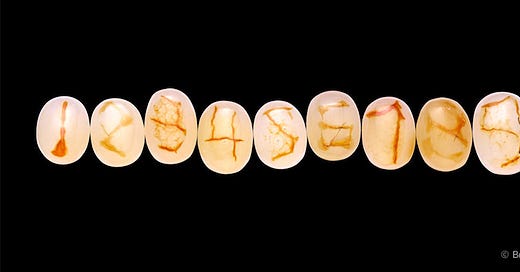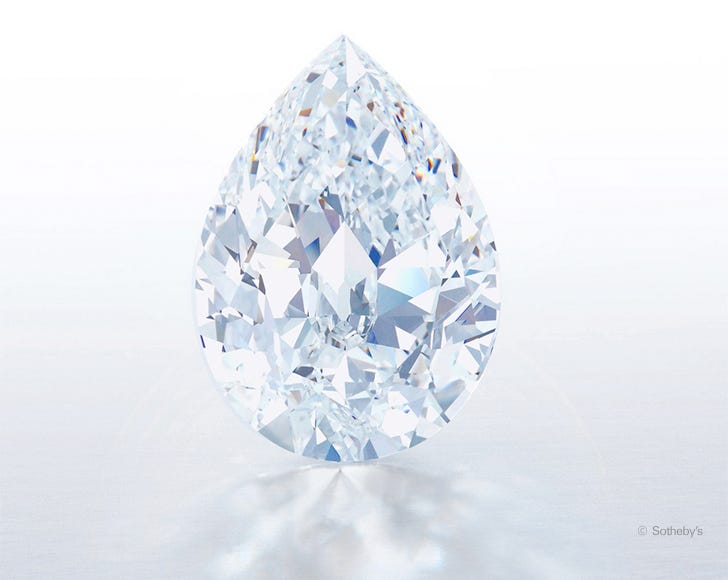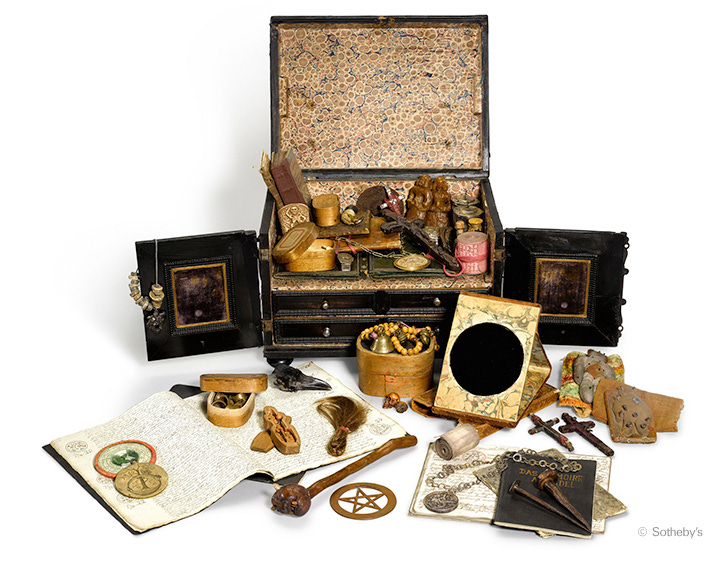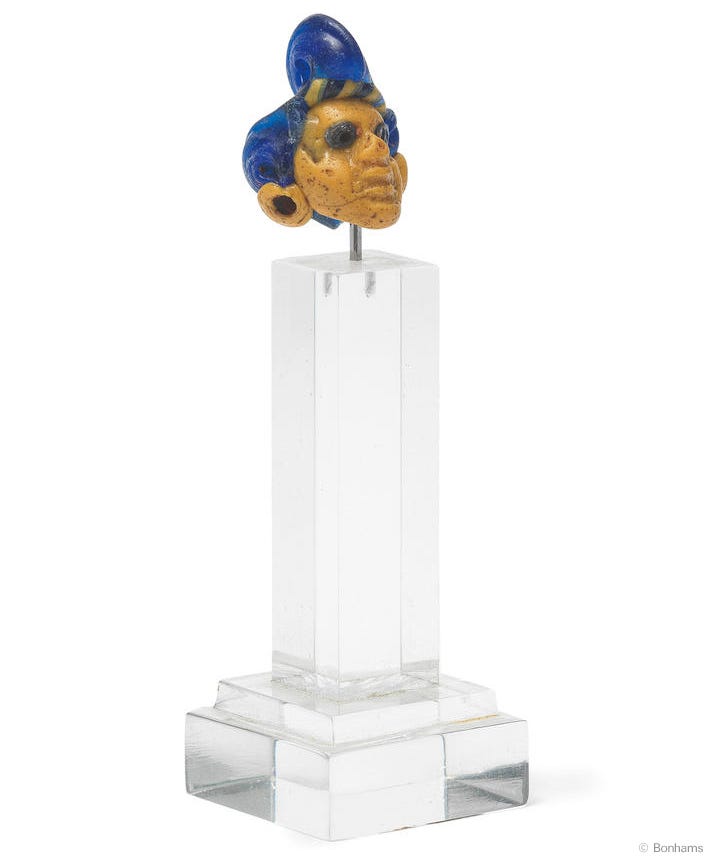On Friday, Sotheby’s Hong Kong will be auctioning “The Key 10138,” an exceptional D color (a.k.a. colorless) pear-shaped unmounted diamond weighing 101.38 carats. It’s a Type IIa diamond, which means it’s one of the most chemically pure of all the diamonds, and fits into a very small category with other famous IIa stones including the Cullinan, the Koh-i-Noor and the Elizabeth Taylor Diamond.
Sotheby’s is allowing cryptocurrency as an option for payment, and includes a load of catalogue waffle about how the naming of this diamond was meant “to symbolize the unlocking of a new era in commerce and technology, and thus is a key to history.” It has an estimate of $10-$15 million and the whole thing just makes me disgusted and sad. The planet clearly isn’t on fire enough; let’s mine more bitcoin so we can buy huge diamonds.
Gah, sorry. I really don’t want to bring everybody down, so let’s switch over to something amazing. Circa 1790, this gorgeous George III gilt-brass and enamel musical automaton clock was made by London master clockmaker John Mottram for the Chinese market.
According to the catalogue note, the Chinese became fascinated with European mechanical clocks in the late sixteenth century, when a Jesuit missionary brought one to Macau. Interest in the clocks grew and eventually spawned both a native craft as Chinese clockmakers learned to create similar pieces, and also helped facilitate the trade between East and West, as East India Company representatives brought ever more ornate and complicated clocks to present to society and even the Emperor. According to Sotheby’s, the Qianlong Emperor (1736-1795) had “thousands of European and Chinese clocks in his collection that were prized for their novelty and design and were aimed at mesmerizing the beholder.”
They’re not kidding about the mesmerizing part — watch the clock in action below. I’m enthralled by the spinning rods of glass that (very effectively!) simulate jets of water in the fountain.
As you can see, the clock is highly decorated, with three tiers and a silver dome that opens to reveal the tiny fountain. Rotating stars set with sparkling paste stones sit above and below the central clock dial, and enamel plaques featuring pastoral scenes decorate the sides. Guilloché enamel panels open at the back to allow access to the movement, and the mechanism kicks into gear at each hour while the clock plays one of four tunes.
Most of Mottram’s clocks were made for the Eastern market, but this type of highly ornamented tiered pagoda clock was rare and spectacular. Interestingly, Sotheby’s says that “the finest clocks for the Chinese market were very often produced in pairs and this magnificent clock is no exception. Its pair is now in the collection of the National Trust at Anglesey Abbey in Cambridgeshire.” Here it is! That’s so cool.
The clock is on sale today in the Treasures auction at Sotheby’s London, and it carries an estimate of $1.4-$2.1 million.
I apologize, but I totally let you all down and somehow missed this amazing lot at Sotheby’s back in May. Listed as “an extraordinary assemblage of objects pertaining to the occult and witchcraft, 17th to 20th century,” the lot came from a German private collection and contained a large hoard of talismans, amulets, bones, voodoo dolls and other occult items all stored in a 17th century box. Please click through to read the full list of nearly 80 macabre little objects; it’s pretty extraordinary, and 10-year-old Me would have absolutely perished with joy if she’d ever been given the opportunity to play with such a thing. Hell, Contemporary Me would STILL perish over it.
But alas, the box of spooky goodies was estimated at $5,500-$8,000 and sold for considerably more at $28,000. Someone must have had an agenda.
Speaking of witchy, here we have a suite of nine oval cabochon-cut agates from Indonesia. Each one has a reddish-brown inclusion that resembles a number from 1-9, and whoever assembled the set is obviously now cursed and trying to unload them on an unsuspecting buyer.
They’re in the current Bonhams Gemstones and Exotic Gemstone Jewelry auction (ending on Friday). If you’re a colored stone person, I highly recommend you click through to see some rare and beautiful stones, including this Tanzanian color-change garnet (which changes from a pinkish-red to purple color depending on whether it’s viewed in daylight or incandescent light), and this incredibly lush ametrine.
Circa 3rd-1st century BCE, this Phoenician or Carthaginian glass pendant depicts a male head with applied cobalt blue eyes, yellow earrings, a twisted blue and yellow headband, and a spectacular blue rockabilly quiff that also serves as an attachment loop. There’s a very similar pendant in the collection of the Metropolitan Museum of Art (with gold suspension ring intact), and according to the Met, “these pendants were used as protective amulets to ward off evil.”
He’s included in today’s Antiquities auction at Bonhams London; estimate $1,100-$1,700.
This knife is a collaboration between jeweler Pierre Sterlé (1905–1978) and the Spanish Surrealist artist Salvador Dalí (1904-1989). Featuring a rock crystal blade and a gray cultured pearl tip, the handle consists of a detailed naturalistic representation of a snail in 18k gold with rock crystal drops scattered throughout.
Sterlé — an exclusive Parisian high-end jeweler in the mid-1900s — was known for creating highly realistic renditions of natural motifs including birds, flowers and animals, so he was a good choice of collaborator for Dalí, who, according to the Dalí Paris Museum, was obsessed with snails because he was:
captivated when he saw a snail on a bicycle outside [Sigmund] Freud’s house, connecting the image of a human head; the head of Freud. It is well known that one of Dalí’s more obsessive fetishes is the snail, because it incorporates the paradox of softness (the animal) with hardness (the shell).”
Fashion designer Zac Posen has a video of the knife on his Instagram, and it looks like it has a really satisfying heft to it. (Warning: the video strobes a bit.) It’s included in the Christie’s Paris Joaillerie online auction closing tomorrow; estimate $18,000-$24,000.1
I know I’ve highlighted reverse crystals before (because I love them), so please accept my apologies because I’m going to show you more. This time I’m doing it because I want to point out that occasionally things….don’t quite work out as well as planned. Many of the reverse crystals we see on sale or in collections are of exquisite quality (like the circa 1880 brooch above, which is in the collection of the British Museum), and showcase the skill and incredibly light hand of the artist.
And sometimes, we see this:
The ring above is circa 1885, so it was created around the same time as the British Museum collie, but it certainly wasn’t painted by the same artist. (The painting also makes it difficult to tell if the carving underneath is more refined.) I initially thought the subject was a cat, but on closer examination it appears to be a small dog that strongly resembles Jerry Colonna. And I ABSOLUTELY FRICKING LOVE IT.
Some business news! Since I started this newsletter (just a little over two years ago, holy crap!), many of you lovely people have emailed offering financial support if I ever wanted to go paid. I’ve always resisted, because I don’t have the time or brain space to do more posts or fiddle around with who sees what. And even though it can be a lot of work, I really don’t want Dearest to feel like a job. So I think the solution is to go with a donation model — if you would like to throw some money at me, THANK YOU! You now have an option to do that. If not, that is 100% cool, too! All of my posts will continue to be public and free for all to see.
So now, when you click the “Subscribe now” button, you'll see three new options in addition to “free:”
Annual Supporter ($50/year)
Monthly Supporter ($5/month)
Dearest Ancient (This plan is based on a “Founding Member”-type deal and lets you pay a higher amount of your choice, up to $200. I’m only including it because the title “Dearest Ancient” popped into my head and made me laugh)
Again, nothing is changing with the newsletter and everything will continue to be free. But I also need to buy a car, so hell; worth a shot.
Fingers crossed I set all that stuff up correctly, lol. ANYWAY, thank you all so much for continuing to read and indulge my nonsense. (I honestly can’t believe it’s been two years already.) I hope you’re all well and happy, and that my American compatriots had an enjoyable Fourth of July holiday without too many jackasses up the street setting off M80s at 1am five nights in a row.
As always, please feel free to reply to this email, find me on Twitter, or leave a comment. Have a good rest of the week, everyone. Stay well and hydrated! xxx
There’s a bit more bonkers Dalí/Freud/snails content to be found via Dangerous Minds, quoting the early Dalí autobiography The Secret Life of Salvador Dalí:
Several years after my last ineffectual attempt to meet Freud, I made a gastronomic excursion into the region of Sens in France. We started the dinner with snails, one of my favorite dishes. The conversation turned to Edgar Allan Poe, a magnificent theme while savoring snails, and concerned itself particularly with a recently published book by the Princess of Greece, Marie Bonaparte, which is a psychoanalytical study of Poe. All of a sudden I saw a photograph of Professor Freud on the front page of a newspaper which someone beside me was reading. I immediately had one brought to me and read that the exiled Freud had just arrived in Paris. We had not yet recovered from the effect of this news when I uttered a loud cry. I had just that instant discovered the morphological secret of Freud! Freud’s cranium is a snail! His brain is in the form of a spiral—to be extracted with a needle!
Dude, chill!












Oh my god the clock video
Wow. How are those agates even creepier than the voodoo kit?! Then I had a panic moment between quaff, quiff and coiff. But I'm ok now. BTW, I did watch the entire Jerry Colonna song. Now I'm craving a Gin Rickey and it's only 8am. Thank you.